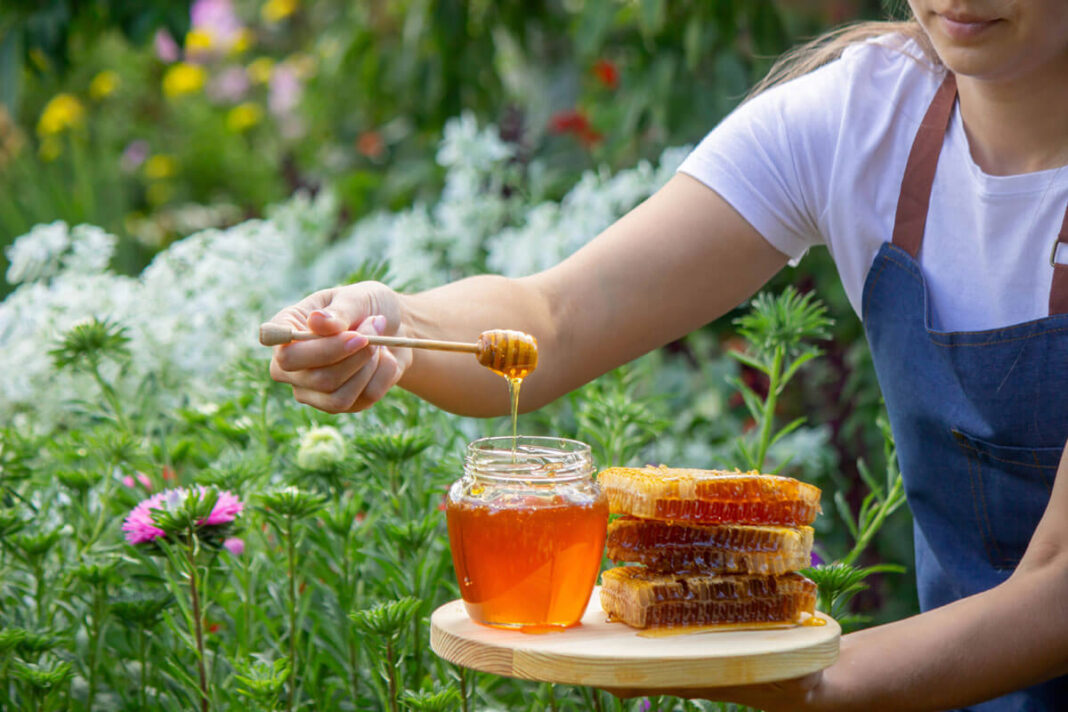It’s a beautiful morning here in the UK – or perhaps you’re enjoying your afternoon tea. Either way, maybe a jar of honey sits close at hand, ready to sweeten your toast or cup. And if you take a moment to turn the jar around, you may be pleasantly surprised to find it comes from Romania.
For years now, Romania has been one of Europe’s powerhouses of honey. In 2015 and again in 2018, it led the EU in annual production, and since 2011 the country has consistently ranked among the world’s top ten producers. From delicate acacia honey to rich, dark forest honey, this sweet nectar, born in vast, biodiverse landscapes with minimal chemical intervention, travels far and finds its way more and more often onto British breakfast tables.
The Qualities of Romanian Honey
Romania is one of Europe’s leading honey producers, and its honey is valued for both nutritional content and authenticity. Scientific analysis of 61 samples from eight regions showed that Romanian honey consistently contains essential minerals such as potassium, calcium, magnesium, sodium, and manganese. Potassium is the dominant element, with concentrations exceeding 200 mg/kg, depending on the floral source and region [1].
Different honey types show distinct mineral profiles. For example, chestnut honey from Satu Mare had the highest potassium content, while lavender honey from Vaslui showed elevated levels of magnesium and iron. These variations are directly linked to geography and soil conditions, giving each type of Romanian honey a measurable regional identity.
The same studies also confirmed that most Romanian honey is free of toxic elements like arsenic, mercury, or uranium. However, in areas near industrial activity, traces of lead and cadmium were detected, which highlights honey’s role as a natural indicator of environmental quality.
Types of Romanian honey
Romania’s geography and diverse vegetation provide excellent conditions for beekeeping, resulting in a wide range of honey types. The most common varieties include:
- Acacia honey (Robinia pseudoacacia) – One of the most appreciated honeys, especially in export markets. It has a light colour, stays liquid for a long time due to its high fructose/glucose ratio, and is known for a mild, delicate taste. You can find it in almost every Romanian shop online in the UK.
- Linden honey (Tilia spp.) – Originating mainly from Moldavia, where large linden forests are found. It has a strong aroma and higher acidity than other honeys.
- Sunflower honey (Helianthus annuus) – A significant share of Romanian production, especially in years with favourable climate. It crystallizes quickly due to a higher glucose content and is rich in phenolic compounds, giving it stronger antioxidant activity.
- Polyfloral honey – The dominant type in most year. Its properties vary depending on the region and flowering season, but it is valued for its complex flavour and nutritional diversity.
- Colza (rapeseed) honey (Brassica napus) – Common in agricultural regions. It crystallizes rapidly and has a higher sucrose content compared to other types.
- Chestnut honey (Castanea sativa) – Produced mainly in north-western regions. It is darker, richer in minerals such as potassium, and has a more intense flavour profile.
- Honeydew honey – Unlike floral honey, it comes from sugary secretions left by insects (like aphids) on tree leaves and bark. Bees collect this honeydew in forests, then transform it into a darker, mineral-rich honey. It has stronger antioxidant properties compared to nectar honeys.
Other less common but locally important types include raspberry, mint, coriander, and heather honey.
Export Trends to the UK
Romania’s role as a honey exporter to the United Kingdom has grown steadily in recent years. In 2022, Romania ranked around 14th–15th among honey suppliers to the UK. In 2023, it advanced to 11th place, exporting about 445 tonnes worth approximately 1.8 million USD. By 2024, Romania had climbed further to become the 6th largest exporter of honey to the UK [2].
This rapid rise, nearly ten positions in just two years, highlights Romania’s increasing visibility and competitiveness on the British market. With consistent production, diverse honey types, and strong consumer interest in authentic and traceable products, Romanian honey is securing a stronger place on UK breakfast tables year after year.


